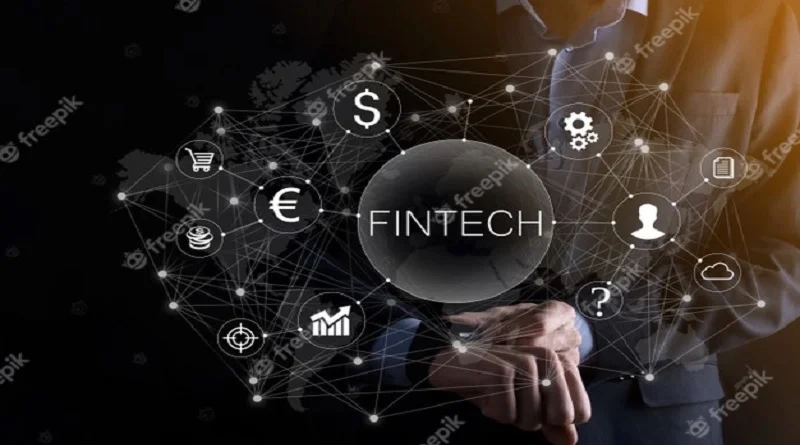9 MISUNDERSTOOD FINTECH TRENDS IMPACTING RETAIL BANKING
In banking, trends and their related buzzwords pop up with increasing rapidity. Not all of them turn out to be impactful, but enough do that banks and credit unions not only have to track them, but — more importantly — grasp their significance.It’s true, what you don’t know can hurt you. And yes, definitions matter.No one wants to look uninformed. So, when terms such as “decentralized finance” and “digital transformation” are thrown around, it’s the rare banker who raises their hand to ask, “What exactly does that mean?”
1. Banking as a Service (BaaS)
A strategy where financial institutions partner with fintechs or non-financial firms to provide financial services to the partner’s customer-base, leveraging the financial institution’s charter.
Banking-as-a-Service, a descendant of Software-as-a-Service and the inclination of vendors to label everything “as-a-service,” is a term we’ve all heard, but few banking executives understand it enough to do anything about it. Only about 10% of financial institutions are currently pursuing a BaaS strategy. The majority are on the fence, according to a Cornerstone Advisors survey.
Think of BaaS as “fintech banking” in which the bank provides white-labeled products or services to customers indirectly through a fintech.
Bankers often worry that BaaS turns them into “dumb pipes.” Guess what, an institution can generate more revenue and profits by being a “dumb pipe” than as a “smart provider,” says Cornerstone. Being a dumb pipe doesn’t seem so bad, after all.
2. Buy Now, Pay Later (BNPL)
A payment mechanism that enables someone to spread their payments for a product or service over a specified period of time for either a fixed fee or a set interest rate.
Wait, BNPL sounds a lot like old-school installment payments but with a fancy new name. Yes, and no. What’s different about BNPL is that the offer is made earlier in the buying cycle and can influence buying behaviors. Instead of booking that trip six months from now. BNPL is the nirvana of instant gratification.
Merchants are all over BNPL since it encourages consumers to buy immediately and buy more. It’s attractive to consumers as well: the percentage of Gen Zers using BNPL grew six-fold between 2019 and 2021, says Cornerstone.
Consumer advocates are also all over BNPL, saying it encourages consumers to take on debt that they can’t afford. There’s truth to that claim: Cornerstone research found that 31% of consumers who use BNPL say their financial health is “dire” or “struggling” versus 20% of those who don’t use BNPL.
Bankers aren’t so crazy about BNPL either since it means less interchange revenue and consumer engagement. Expect financial institutions to push back, probably playing the “it’s-bad-for-consumers” regulatory card.
3. Cryptocurrency
A digital form of payment that can circulate without the need for a central monetary authority. Bitcoin is the best-known example, but is just one of hundreds.
15% of consumers already own some form of cryptocurrency and 11% plan to purchase it in the next year, says Cornerstone. Consumers increasingly see crypto as legit. Banks, not so much. Risk aversion and compliance fears stand in the way.
But consumers would be happy to fill their digital wallets with cryptocurrency from their bank. Of those already holding crypto, 92% say they would definitely or maybe use their bank to invest. More than two thirds (68%) are very interested in Bitcoin-based debit or credit card rewards.
Banks and credit unions can’t ignore cryptocurrency and hope it goes away. It’s time to get educated on the compliance factors and product options.
Falling back on moral excuses that crypto is too risky isn’t going to cut it, says Cornerstone. Do you deny a loan to a customer because they are using the money for a trip to Vegas? Do you refuse to bank a customer because they buy lottery tickets? Crypto is becoming mainstream, and refusing to play is a bad business decision, says Cornerstone.
4. Decentralized Finance (DeFi)
Financial products and services that anyone with an internet connection can access.
Do consumers really want a decentralized financial system? Highly doubtful. Sure, DeFi provides independence, transparency and is global in nature. Some consumers are using DeFi apps (dapps) for peer-to-peer financial transactions, creating non-fungible tokens (NFTs), and for flash loans, which Cornerstone describes as basically decentralized arbitrage.
DeFi isn’t likely to take off, the consultancy maintains. There are liquidity issues and the chance for things to go very, very wrong. Banks can breathe a collective sigh of relief on this one.
5. Digital Transformation
Integration of digital technologies into all areas of a financial institution, fundamentally changing how it operates and delivers value. It’s a culture change that continually challenges the status quo and gets comfortable with failure.
If bankers drank a beer or a whisky for every time someone in a meeting said, “digital transformation,” there would be an acute increase in liver problems. The good news is that Cornerstone predicts that bankers only have to hear about digital transformation for another 18 months or so until a new buzzword takes its place.
But the concept of digital transformation at banking institutions — which is not only real, but vital — will slowly march forward. Cornerstone found that only about one-quarter of financial institutions had embarked on a digital transformation strategy before 2019. Only 36% say they are at least halfway done. Of those:
- Four out of 10 haven’t even deployed cloud computing or APIs (application programming interfaces).
- Only about one-quarter have implemented chatbots.
- Just 14% have deployed machine learning tools.
- Less than one-third have achieved a 5% improvement in any of nine KPIs.
We’ll be on to our next buzzword before digital transformation is even half-way done at most banks and credit unions.
Delusions of digital transformation aside, here’s how Cornerstone says you’ll know you are digitally transformed. You can:
- Open checking accounts in five minutes or less.
- Instantly approve unsecured loan applications through digital channels.
- Have a holistic view of consumers’ financial lives.
- Deploy new digital products and services with a digital product factory.
6. Embedded Finance
The integration of financial services into non-financial websites, mobile apps, and business processes.
Embedded finance is an umbrella term for all types of products including payments, lending, banking, and insurance. But the thought of integrating banking services into a provider like Lyft or Chime makes many bankers break out in a cold sweat. Cornerstone encourages banks and credit unions to instead look at non-financial companies as distribution channels that will enable financial institutions to reach a broader range of consumers. Lightyear Capital estimates that embedded finance revenue will grow to nearly $230 billion by 2025.
Fueling this growth is an interconnected ecosystem of providers like Lemonade and Affirm, enablers like Green Dot and Plaid, and sponsors like Amazon and Uber.
Cornerstone’s verdict: Capitalizing on these new distribution channels is a wise choice.
7. Embedded Fintech
Basically, the reverse of embedded finance, this is the integration of fintech products and services into financial institution’s product sets, websites, mobile applications, and business processes.
It’s easy to confuse embedded finance with embedded fintech as they are two sides of the same coin. Embedded finance distributes banking services through non-banks while embedded fintech puts fintech products and services into banks.
Embedded finance may be out of the reach of smaller institutions, but embedded fintech is not since banks and credit unions can use products and services provided by fintechs to create new revenue streams. Cornerstone offers some options:
- Bill negotiation services: Partner with a fintech like Truebill or Billshark to create new revenue streams and drive consumers back to financial institutions’ bill pay platforms.
- Subscription services: Partner with a fintech like WalletFI to help consumers manage their dozen or more subscriptions.
- Data breach and identity protection services: Partner with a fintech like Breach Clarity (part of TransUnion) to analyze data breaches and provide consumers with recommendations on what they should do.
8. Financial Health
The ability to manage expenses, prepare for and recover from financial shocks, have minimal debt and build wealth.
You may wonder why “financial health” makes a list of misunderstood financial terms. It’s because the vast majority of bankers confuse financial health with financial literacy. Financial health is behavioral, integrated and measurable, and will become the basis of competition in banking, notes Cornerstone. Financial institutions need to use technology to help consumers change their financial behaviors and influence their financial decisions.
- Financial institutions already do a decent job of promoting financial literacy, defined as having the knowledge and skills to make informed decisions. It’s analogous to dieting in that we all know what we should be eating, but changing our behaviors is what’s so dang difficult.
Expect the financial health fintech space to grow. Cornerstone predicts that an Amazon of financial health — or a Fitbit of banking — will emerge. To be clear, the new financial health is AI- and API-driven. And don’t be surprised if Congress starts requiring financial institutions to monitor and improve consumers’ financial health.
9. Platform Banking
Plug and play business model that allows multiple providers and consumers to connect, interact, and create and exchange value.
Bankers think they know platforms. They’ve got a lending platform, an online banking platform, and a mobile banking platform. But that’s not what we’re talking about. A platform is not just a technology construct but a business model as well.
Becoming a platform is hard, notes Cornerstone, pointing at Amazon as an example. It took Amazon about 20 years before it became a platform. As far as transforming business models, most bankers simply don’t have the appetite for that level of change.
Financial institutions may not become platforms, but they can collaborate with platforms. There are core integration platforms that allow financial institutions to integrate with third-party systems and analytics platforms that allow financial institutions to use data from multiple sources.
As an aside, platform banking and open banking are not the same. A bank can pursue a platform strategy and not be open, and an open bank doesn’t need a platform.
“Open banking” is one of seven other terms covered in the Cornerstone/Nymbus report, “The Definitive Guide to Potentially Misunderstood Fintech Trends and Terms (and What They Mean to the Banking Industry.” This article just covers a fraction of what’s in the 65-page report, which can be accessed here.








